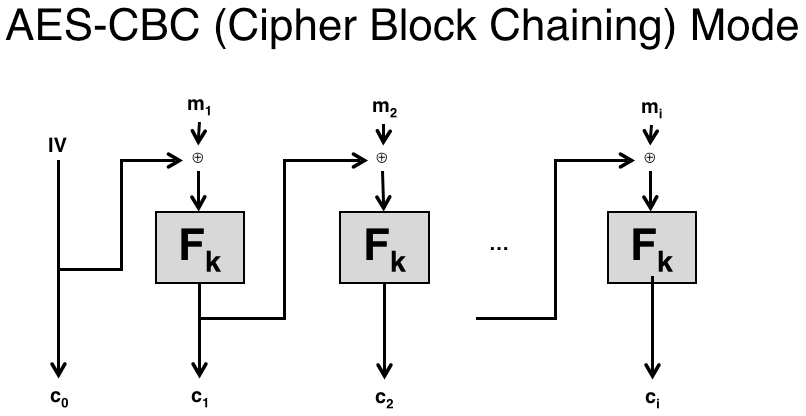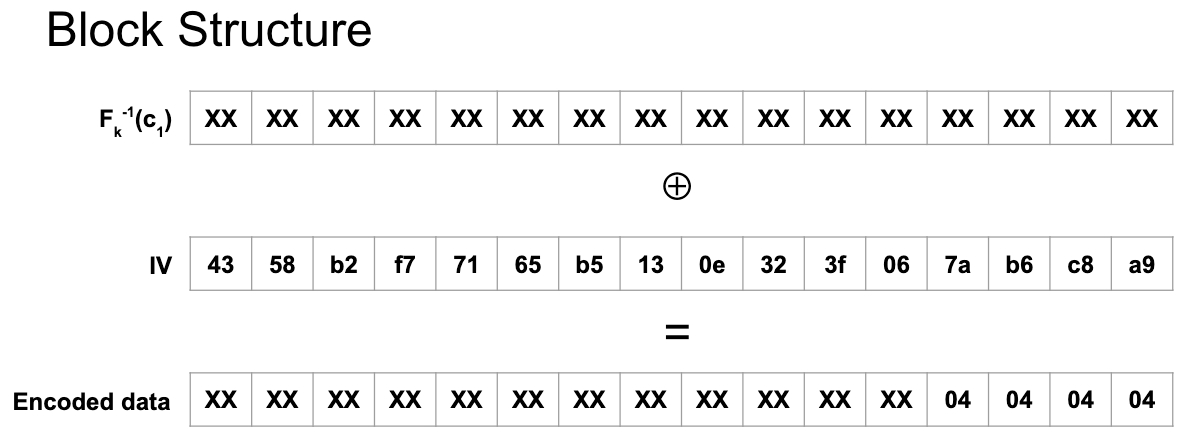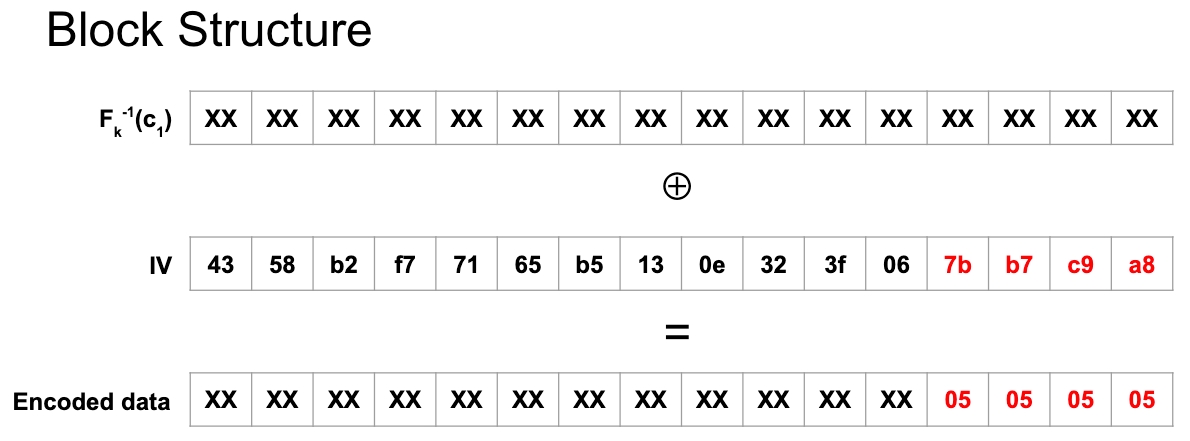Padding Oracle Attack
Exploitation Guide for Vector
Summary
In this walkthrough, we will mount a cryptanalytic attack known as a “padding oracle attack” against a web application that uses an unauthenticated AES-CBC crypto scheme. This will reveal a user’s plaintext password. We’ll use this password to recover the Administrator’s password from a password-protected archive.
This scenario demonstrates that confidentiality and integrity are equally important factors in cryptographic protection mechanisms. Despite the fact that strong cryptography is implemented in this scenario (in the form of AES encryption), it is implemented incorrectly, which will entirely dismantle the protection mechanism.
Enumeration
Nmap
We’ll start with an nmap scan against all TCP ports:
kali@kali:~$ sudo nmap -p- 192.168.120.159
Starting Nmap 7.80 ( https://nmap.org ) at 2020-07-21 13:18 EDT
Nmap scan report for 192.168.120.159
Host is up (0.033s latency).
Not shown: 65527 filtered ports
PORT STATE SERVICE
21/tcp open ftp
80/tcp open http
135/tcp open msrpc
139/tcp open netbios-ssn
445/tcp open microsoft-ds
2290/tcp open sonus-logging
3389/tcp open ms-wbt-server
5985/tcp open wsmanNext, we’ll further scan each of these open ports for more details. The results of the scan against port 2290 reveal a web application hosted on IIS:
Web Enumeration
Navigating to the default web page on port 2290 (http://192.168.120.159:2290/), we observe the following error:
If we include the requested parameter in a GET request (http://192.168.120.159:2290/?c=test), the web server responds with the following:
Although this isn’t much to work with, the page’s source code reveals a bit more:
We’ll note the name Victor for future reference. We also note the hexadecimal ciphertext as well as the cryptographic scheme, AES-256-CBC-PKCS7. Dissecting that notation, it seems we are facing a 256-bit AES (Advanced Encryption Standard) cipher that employs CBC (Cipher Block Chaining) crypto mode and PKCS7 (Public Key Cryptography Standards #7) padding mode. Research on each of these terms reveals that we are facing a significant hurdle:
Judging by the length of the given ciphertext and the secondary hint (“Victor’s TODO: Need to add authentication eventually…”), we can assume that the scheme is not authenticated. Normally, crypto schemes that lack ciphertext authentication fall apart very quickly under the Chosen Ciphertext Attack (CCA) adversarial capability. One of the most infamous attacks in this category is the Padding Oracle Attack, which completely dismantles unauthenticated AES-CBC-PKCS7 schemes. Let’s pursue this attack vector.
Exploitation
Padding Oracle Attack Overview
Understanding Ciphertext Structure
The ciphertext we are given is represented by the following 32 bytes (256 bits):
We know that the AES cipher block size is 128 bits, and the initialization vector (IV) is just a single block, or 128 bits. The AES-CBC ciphertext format consists of an IV block followed by the blocks required to encrypt the entirety of the plaintext message. Because there are only 256 bits in the given ciphertext, we assume the following about our ciphertext:
Understanding PKCS7 Padding Mode
Block ciphers can only operate on complete blocks. Because of this, the raw message must be padded, otherwise we could only encrypt messages of exactly length (n * L), where L is the block size of the cipher. In short, padding allows for encryption of arbitrary-length messages.
Notation:
In PKCS7 mode, given a block length of L, there are two specific use cases:
While this may seem complicated, it really is not. Let’s explore three examples.
Example #1: “hello”
First, we’ll hex-encode our text: 0x68656c6c6f. There are 5 bytes in “hello”, and the AES block size is 16 bytes. Therefore, we have to pad 11 bytes, and the value of each of the 11 bytes is 11, or hex 0x0b. The padded message that we send to AES would be:
Example #2: “hi”
Encoding this into 0x6869 results in 2 bytes, and the AES block size is 16 bytes. Therefore, we have to pad 14 bytes, and the value of each of the 14 bytes is 14, or hex 0x0e. The padded message that we send to AES would be:
Example #3: “OopsSixteenBytes”
Finally, encoding this text into 0x4f6f70735369787465656e4279746573 results in exactly 16 bytes, which is the AES block size. In this special case we must pad an entire new block consisting of all 16s, or hex 0x10. PKCS7 requires this added block. In this example, the padded message that we send to AES would be:
Understanding CBC Crypto Mode
Moving on, the structure of CBC crypto mode is as follows:

The circular plus symbol designates the binary XOR operation which is computed on every byte of the 16-byte block. The function F operating on the key k denotes the AES cipher. The most important detail to understand from this structure is that, in CBC mode, the IV has a direct impact on every single cipher block that follows.
In this case, we are dealing with only two blocks: the IV (or c0) block and the first (c1) cipher block. It is crucial to understand that the IV was XORed with the first padded message block before being fed into AES.
Understanding The Padding Oracle Attack
The CBC security notion is this: “if as much as a single bit about decrypted ciphertext is leaked, the adversary can learn the entire plaintext message”. To succeed in this attack, we as the adversary must perform two steps. We must learn the length of the plaintext message and then brute-force the ciphertext byte-by-byte to trick the responding oracle to leak the underlying plaintext message.
Padding Oracle Attack
Learning The Message Length
Let’s begin by determining the message length. Including the original ciphertext in the request (http://192.168.120.159:2290/?c=4358b2f77165b5130e323f067ab6c8a92312420765204ce350b1fbb826c59488) will result in:
Our task here is to simply determine the length of the decoded message and, therefore, the length of the padding. To that end, we will start brute-forcing the ciphertext from the “left”. We will do that by replacing legitimate IV bytes with any other byte. To be clear and consistent, we will be replacing each byte with the null byte 0x00.
To start, we’ll replace the 1st byte (0x43) with the null byte (0x00) and submit the request to the server:
This was expected, but let’s keep pushing. Let’s also overwrite the 2nd (from the “left”) byte with 0x00:
Moving along, we will also overwrite the 3rd byte:
The response is still the same. Let’s also overwrite the 4th byte:
We’ll continue this approach by overwriting subsequent bytes. Eventually, when we overwrite the 13th byte, we receive a different response.
This is a major breakthrough for us. The response changed when we submitted a 13-byte message. Let’s assume that the server was expecting 12 bytes of plaintext. Given what we know about the structure of PKCS7 padding, if we have 12 bytes of plaintext, we must add four bytes of padding (0x04040404), making the encoded message block:
Remember what we mentioned about the CBC security notion: “if as much as a single bit about decrypted ciphertext is leaked, the adversary can learn the entire plaintext message”. In our case, we may have just forced 32 bits to leak since we know the four bytes of padding must be 0x04040404.
Compromising the Message
Now that we may know the length of the plaintext message, we can proceed. To succeed in the attack, we must understand the following:

In the image above, the inverse of F of k is simply the decryption process of AES. We are not “breaking” AES so we will not be able to recover the 256-bit crypto key that was used by the cipher. However, XORing the IV block with the decrypted first cipher block yields us the encoded data.
We know that the actual message is 12 bytes long. This means we know the last 4 bytes of the encoded data. We will begin brute-forcing the plaintext message contents starting from the last byte and continuing until the very first byte. Note that it is necessary to start at the end. In this attack, we will be modifying only the IV block, not the cipher block.
To start this attack, we will replace the last 4 bytes of the IV as follows:

Why? We want to be pushing byte by byte, manually increasing the PKCS7 padding bytes to trick the oracle into revealing secret information. The last byte of the modified IV is 0xa8 because 0xa8 = 0xa9 ⊕ 0x04 ⊕ 0x05. In detail:
In order to brute-force the last plaintext message byte, we must “ask” the server 256 “questions”. Accounting for the law of averages, we should expect to get a positive reply within approximately 128 requests. Specifically, we will be attacking byte 0x06 of the IV.
To automate this task, we can utilize the PoC script below. In this script, the iv_prefix variable contains the remaining unmodified IV bytes, and the iv_suffix variable contains the last 4 modified bytes. We are attacking the IV byte between the prefix and the suffix:
When we execute this script, the server responds with an ACK at byte 0x34 (http://192.168.120.159:2290/?c=4358b2f77165b5130e323f347bb7c9a82312420765204ce350b1fbb826c59488):
What does this mean? We were tricking the oracle into thinking that the padding was five bytes, instead of four. The messages we were sending obviously decrypted into absolute garbage, but that doesn’t matter. All the oracle cares about is whether the padding is correct. That means that when the server responded with an ACK, the padding did actually compute to 0505050505.
Therefore, what would have given us 0x05 in the position IS 0x34. Because of the linearity of the XOR operation, we can now compute the inverse of F of k at that position, which is 0x31:
All that is left to do now is XOR that result with the original IV byte at that position (the byte we were attacking) which is 0x06. This reveals the last plaintext message byte:
It should be clear at this point that this scheme is broken. To proceed with the attack, we will replace the last five bytes of the IV to 0606060606, and then attack the sixth byte (0x3f). We could repeat this process until we discover the full plaintext message.
Understanding the mechanics of the attack, we can script it. We would begin by determining the length of the decoded plaintext message, and then proceed to brute-force it as we did above.
The complete PoC that leads to compromise is as follows:
Executing this attack leaks the plaintext message WormAloeVat7:
This proves that if we have confidentiality, but not integrity, then we have nothing. Ciphertexts must be authenticated with an HMAC construction or a similar scheme.
RDP
Remembering the note from the previous interactions with the app, let’s try to RDP into the system, as victor with a password of WormAloeVat7:
Last updated
Was this helpful?